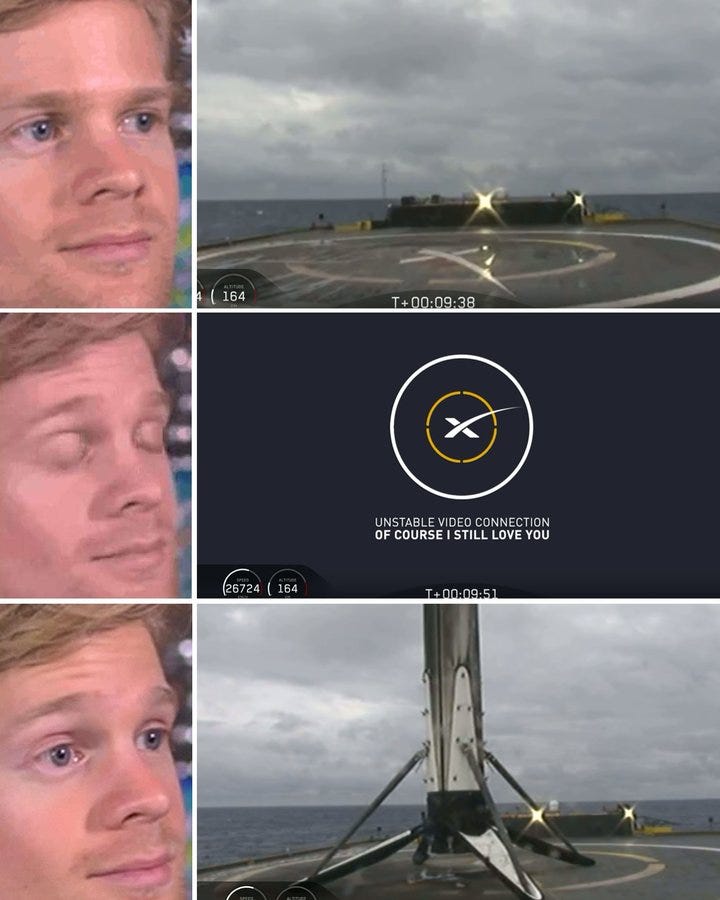The Mystery of SpaceX Drone Ship Camera Blackouts Explained
Written on
Chapter 1: Understanding the Camera Blackouts
Watching a SpaceX Falcon 9 rocket launch into the cosmos is an awe-inspiring experience that captivates audiences worldwide. However, one perplexing aspect of these live broadcasts is the frequent camera blackouts that occur right as the rocket prepares to land back on Earth for reuse.

Viewers often notice that the video feed goes dark just before the Falcon 9 comes into view, only to return moments later with the rocket perfectly positioned on the landing platform. What causes this phenomenon? Are there hidden reasons behind these interruptions?
The answer lies in the technology used to transmit the live feed from the drone ship, which is stationed hundreds of miles off the coast. This remote location necessitates the use of satellites to relay the video to millions of viewers around the globe. A large antenna on the drone ship emits a directional signal, which is crucial for maintaining a stable connection.
Section 1.1: The Role of Directional Antennas
To understand the issue further, it's essential to recognize how directional antennas work. They are designed to send signals in a specific direction, which is critical for the drone ship's live feed. As the Falcon 9 approaches for landing, it slows down using its Merlin engines, generating significant thrust—over 100,000 pounds—directed towards the drone ship's surface.
This powerful thrust creates vibrations that can misalign the antenna with the satellite, leading to a temporary loss of the video feed. Consequently, viewers see a message stating "Unstable Video Connection. Of course, I still love you," instead of the anticipated landing visuals.

Section 1.2: Post-Landing Footage
Once the Falcon 9 has successfully landed, the video feed often resumes, showcasing the rocket in its upright position. It’s important to note that the entire landing sequence is recorded continuously, and the footage is typically released later, providing a seamless view of the landing process. There’s no hidden agenda; just a technical limitation during live transmission.
Chapter 2: Potential Solutions to Improve Transmission
The first video titled "Why does the SpaceX droneship camera cut out?" delves into the reasons behind these blackouts and provides more insight into the technology at play.
The second video, "Why does SpaceX land on a drone ship sometimes and land on land other times?" explores the strategic decisions behind landing locations, enhancing the understanding of their operations.
Suggestions for improvement include positioning an additional ship approximately 100 miles away from the drone ship to relay data to the satellite, or switching to an omnidirectional signal. However, while these alternatives exist, they may not be cost-effective for the brief moments of lost connection.
Thank you for reading. If you have any comments, questions, or concerns, feel free to share!